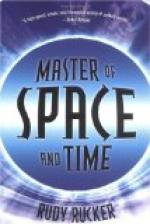We have seen how Alexander Graham Bell, standing in the little room in Boston, spoke through the crude telephone he had constructed the first words ever carried over a wire, and how these words were heard and understood by his associate, Thomas Watson. This was in 1876, and it was in January of 1915—less than forty years later—that these two men talked across the continent. The transcontinental line was complete. Bell in the offices of the company in New York talked freely with Watson in San Francisco, and all in the most conversational tone, without a trace of the difficulty that had attended their first conversation over the short line. Thus, within the span of a single life the telephone had been developed from a crude instrument which transmitted speech with difficulty over a wire a hundred feet long, until one could be heard perfectly, though over three thousand miles of wire intervened.
The spoken word travels across the continent almost instantaneously, far faster than the speed of sound. If it were possible for one to be heard in San Francisco as he shouted from New York through the air, four hours would be required before the sound would arrive. Thus the telephone has been brought to a point of perfection where it carries sound by electricity and reproduces it again far more rapidly and efficiently than sound can be transmitted through its natural medium.
XX
TELEPHONING THROUGH SPACE
The Search for the Wireless
Telephone—Early Successes—Carty
and
His Assistants Seek the Wireless
Telephone—The Task Before Them—De
Forest’s Amplifier—Experimental
Success Achieved—The
Test—Honolulu and
Paris Hear Arlington—The Future.
No sooner had Marconi placed the wireless telegraph at the service of the world than men of science of all nations began the search for the wireless telephone. But the vibrations necessary to reproduce the sound of the human voice are so infinitely more complex than those which will suffice to carry signals representing the dots and dashes of the telegraph code that the problem long defied solution. Scientists attacked the problem with vigor, and various means of wireless telephony were developed, without any being produced which were effective over sufficient ranges to make them really useful.
Probably the earliest medium chosen to carry wireless speech was light rays. A microphone transmitter was arranged so that the vibrations of the voice would affect the stream of gas flowing in a sensitive burner. The flame was thus thrown into vibrations corresponding to the vibrations of sound. The rays from this flame were then directed by mirrors to a distant receiving station and there concentrated on a photo-electric selenium cell, which has the strange property of varying its resistance according to the illumination. Thus a telephone receiver arranged in series with it was made to reproduce the sounds.




